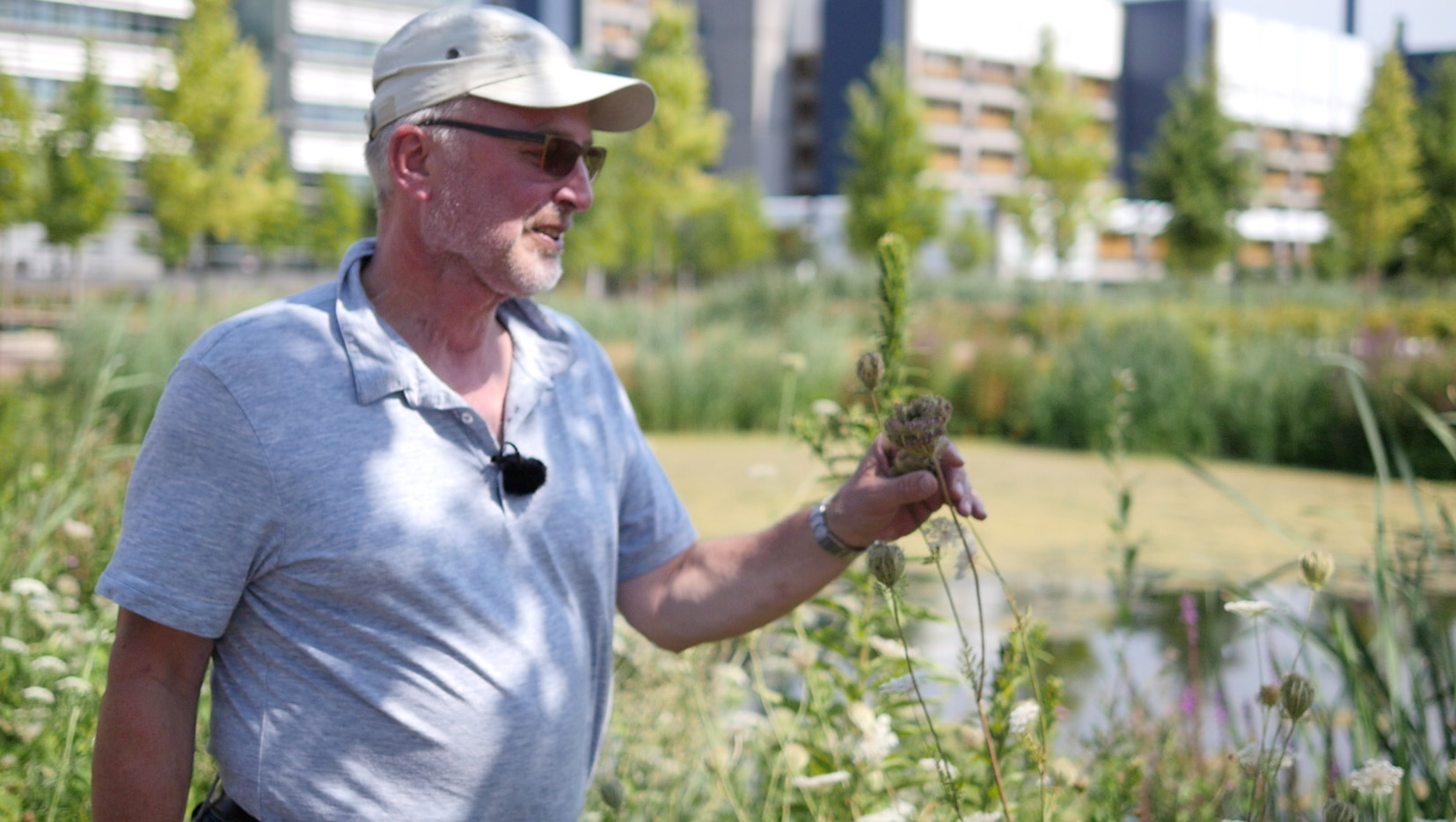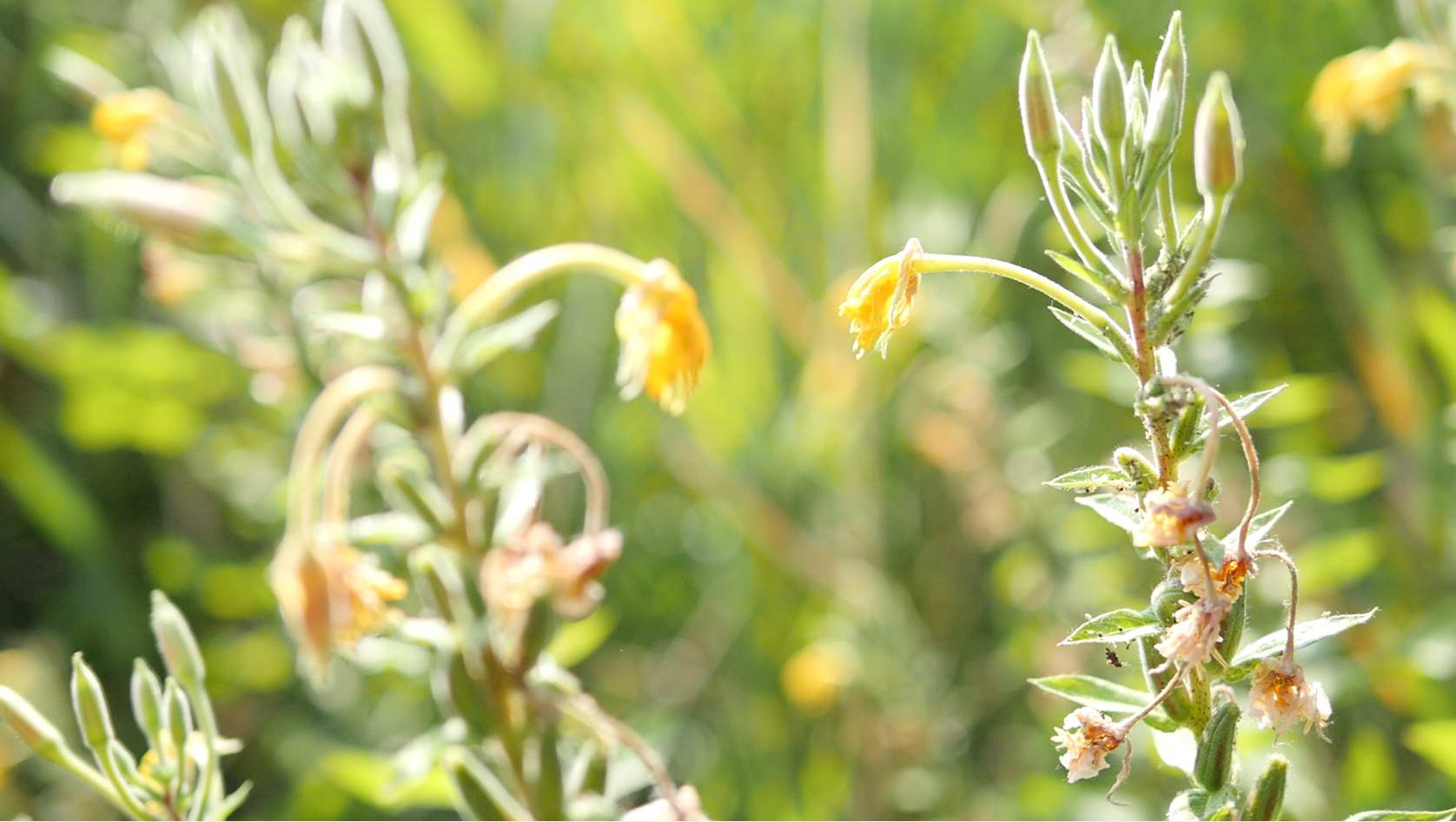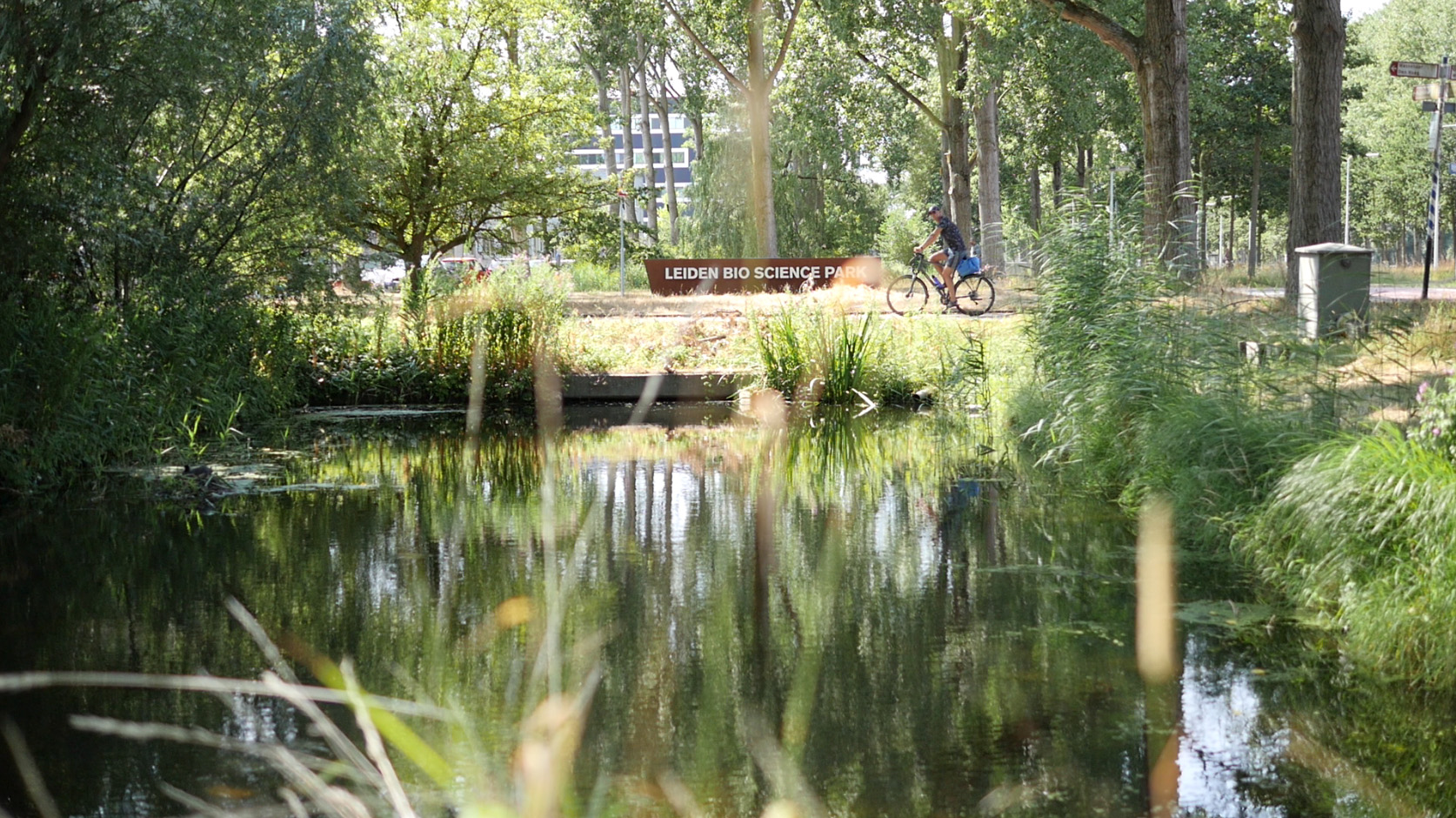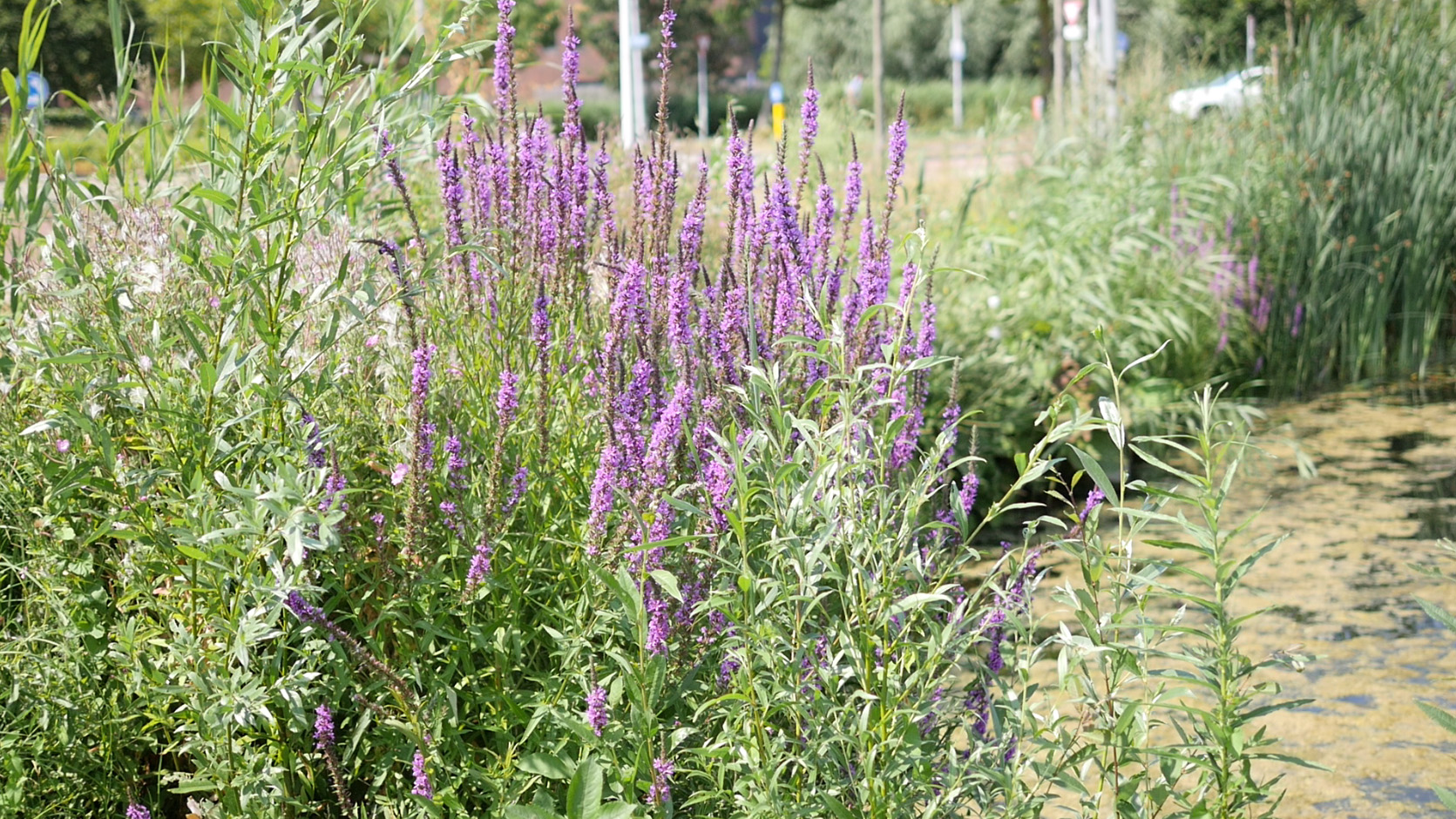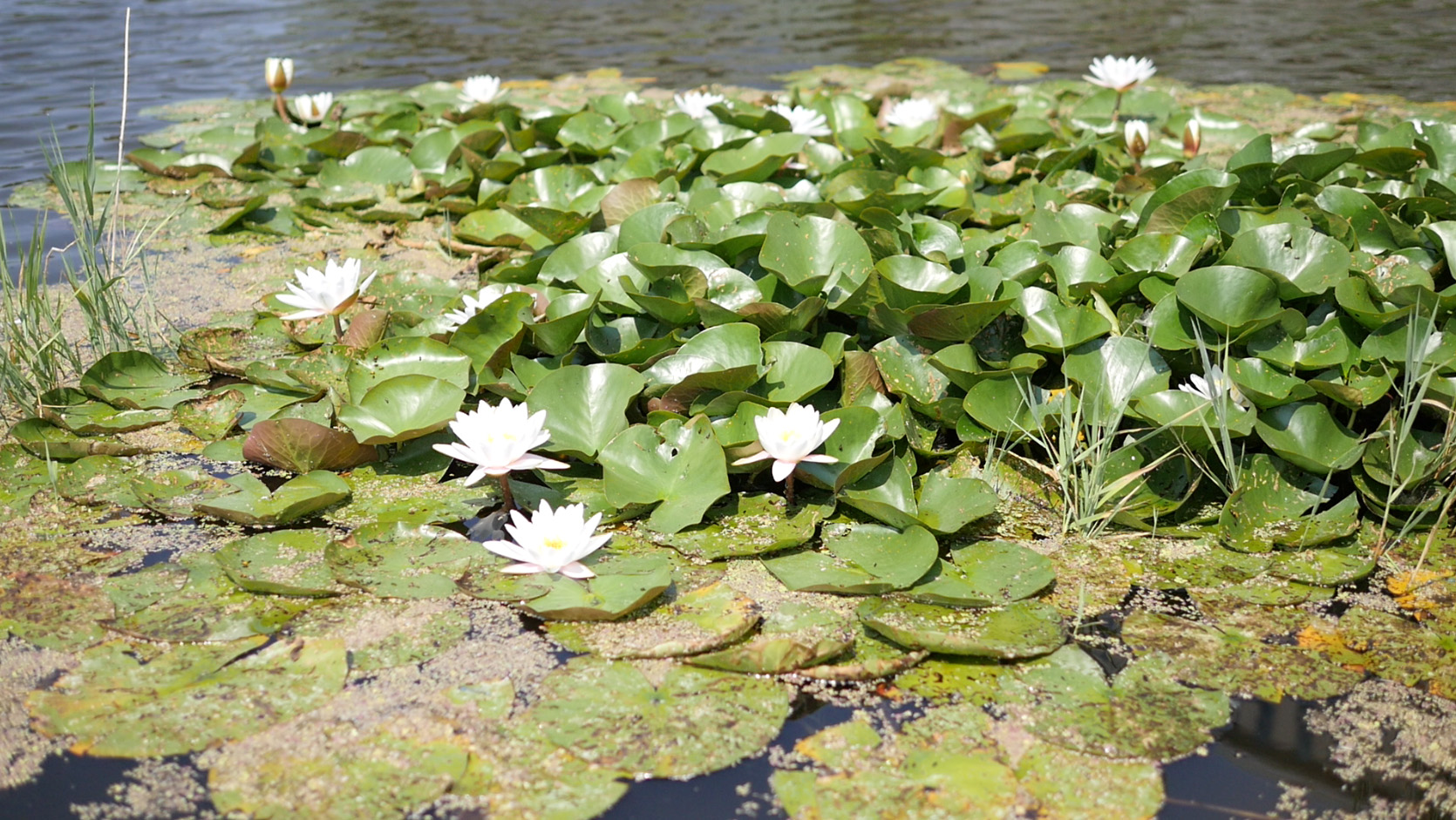
On safari in the Bio Science Park
It is a warm day. The sun is shining brightly while biologist Marco Roos makes his way through the bushes towards a peculiar little plant. Insects buzz, birds chirp. In the background rises the LUMC: at the Bio Science Park in Leiden, people and nature come together in a special way.
Zoning plan vs biodiversity
On 4 July, the advisory report Biodiverse Leiden Bio Science Park was commissioned by the municipality of Leiden. City ecologist Marco Roos (Naturalis Biodiversit Center and Leiden University) chaired one of the working groups. ‘There are big plans to load up this entire area with new buildings and companies. This will be at the expense of the green and blue infrastructures in the area: grasslands, roadsides, forests and waterways. Fortunately, the city council has adopted a motion to grant biodiversity in the area a better place, also in zoning plans that aim for a much higher density of businesses.’
Field excursion
Roos is eager to show the biodiversity hotspots of the Bio Science Park. And who goes with him, will look at the park in a different light. It feels like that biology excursion in high school again. Roos knows every plant by name and can tell something about everything. A plant that you are normally likely to pass by, is common wormwood or mugwort. ‘Mugwort has been in the Netherlands since Roman times. The soldiers put the leaves in their sandals. Probably they then were less affected by blisters and the smell of their feet was neutralized,’ he tells.

Old nature
But, how does all that nature grow at a business park? ‘Well, that nature was already here long before the construction of the Bio Science Park,’ Roos responds grinning. ‘And the remnants of it are still present. Since the construction of the park, nature has been able to develop further in those places that did not immediately had a destiny. In this way for example old pieces of forest and the old ‘tram track’ with a rich herb vegetation developed.’
Water and heat stress
Biodiversity is not only interesting to look at. ‘The green and blue infrastructures in this area are important for catching water after heavy rain showers,’ says Roos. ‘If there were only stones, the water could not go anywhere and we would have to drain it through the sewer. Nature is also very important to combat heat stress. It provides shade and buffers the temperature. On hot days, that could create a difference of ten degrees Celsius! That way, the Bio Science Park remains a pleasant place to work.’

bugs and mess
There are also concerns about all this biodiversity. ‘Some people are afraid that more animals outside the buildings automatically means more animals inside the buildings. Especially in clean rooms, lab rooms or operation rooms.’ However, research shows that this risk is virtually zero: the air filters of the buildings are well sealed. Roos even thinks it can work the other way around: the more biodiversity, the fewer eruptions of pest insects, because the system is more stable.
There are also people who may find biodiversity somewhat messy. ‘The love well kept lawns and nicely laid out flower beds. Those people will have to get used to the fact that nature is not tidy: nature deserves rubbish. And, if you learn to look at it, you will see more and more plants and animals and it will become more and more interesting.’
Maintain or change slowly
According to Roos, the most important outcome of the report is the great unanimity of all parties involved. ‘Everyone realises that old trees are valuable, just like rich soils. And that you can not make everything, but that certain things that already have a history and richness thereby add more than creating something new.’ The philosophy of the advice is an extensive and diversity-oriented management. Where nature has to give way, he advocates doing this phased. For example, the old poplars on the Wassenaarseweg. ‘That old wood has a lot of natural value. The poplars are full of insects and are important for cavevating animals, such as bats and woodpeckers. When you take away everything at once, they lose their orientation, breeding and feeding area.’
Unexpected orchid
The most special plant that Roos has ever encountered is the bee orchid. ‘A special type of orchid that I only knew from southern Europe, but that suddenly pops up at the Bio Science Park. It was standing near the entrance of the Van Steenis building. It was special to see it there.’ Roos hopes the report will serve as an example for other business parks. ‘That way, they don’t have to reinvent the wheel and special plants can continue to amaze us by popping up in unexpected places.’
Text: Hilde Pracht
Pictures and video: Milou van Leeuwen
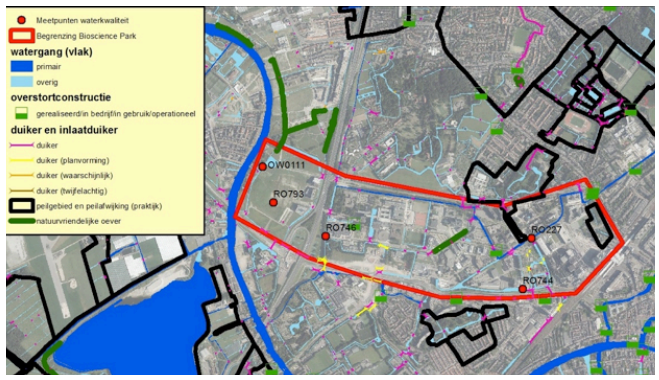
Het Bio Science Park
Marco Roos: ‘The northern boundary of the Bio Science Park is formed by the Wassenaarseweg. The Plesmanlaan is the southern border of the area. Furthermore, it runs from the Leiden Central Station to the Rhine river in the West. The area is intersected by the A44 highway.'
Het rapport
The report Biodiverse Bio Science Park was written in order of the municipality of Leiden by the core group Biodiversity. This core group respresents the interests of the Leiden environmental organisations, Entrepreneurs Organisation Leiden Bio Science Park, Leiden University and the municipalities of Leiden and Oestgeest. The next step is the implementation of the plan. The municipality of Leiden is currently working on a plan for this in consultation with the parties involved. For the next two years, the municipality wants to reserve 400,000 euros. Leiden University and the municipality of Leiden are already taking measuring into their current projects.
The complete rapport can be found here!

